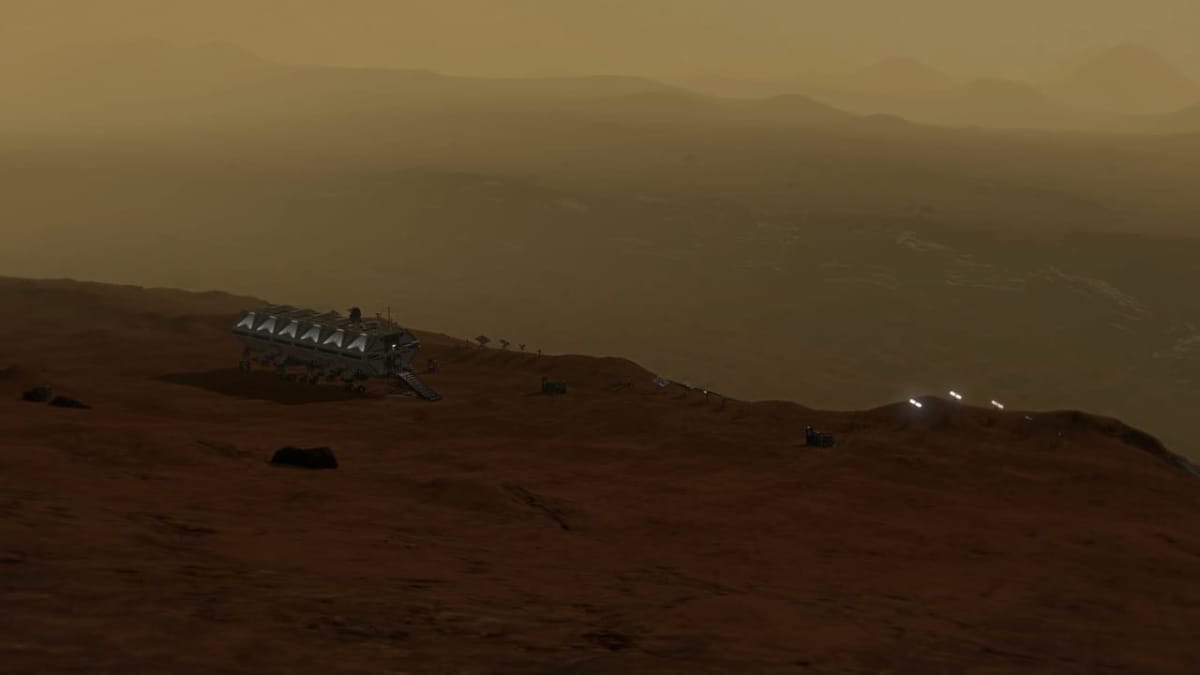I really like The Martian. I read the book by Andy Weir about four times and I can't remember how many times I've seen the movie. I had always wondered why a game developer hadn't taken the time to make a survival game in a similar vein - it could be a really interesting experience where the player has to fight against the environment rather than zombies (such as with The Long Dark). When I heard about a game called Lacuna Passage (developed & published by Random Seed Games and the product of a successful Kickstarter), I was cautiously optimistic about the prospects of a game that could properly deliver the Martian survival experience.
Lacuna Passage puts you in the shoes of Jessica Rainier, the sole survivor of a rescue mission to Mars that set out to discover the fate of the first manned mission. Unfortunately, things don't go so well and everyone but her dies. Mars: 2, Earthlings: 0. Purportedly, the story will be a mix of survival and trying to figure out what happened to the original Mars mission through exploration. The Story mode is still being worked on, but Version 0.53p3 had a mostly-functional Sandbox mode available for me to check out.
A Sandbox game of Lacuna Passage always opens the same - you find yourself in an escape pod with a bit over 90% Oxygen and Battery in your EVA suit. The game prompts you to look around with the mouse and then the pod opens up. After taking a few steps, you're prompted to check out your tablet which will show you your Vitals and other important information. Finally, the game prompts you to bring up your Scanner and find Habitat Alpha before you suffocate and die.
A new Sandbox game is otherwise pretty randomized. Lacuna Passage is a race against time to collect enough supplies to survive and it requires strict resource management (especially at the beginning). I scrubbed my first game after realizing that I was probably not going to make it and I would rather put my time towards a more successful attempt. I took a couple more mulligans as I had encountered a bug or two, and on my final, proper playthrough I felt like I had hit my stride.
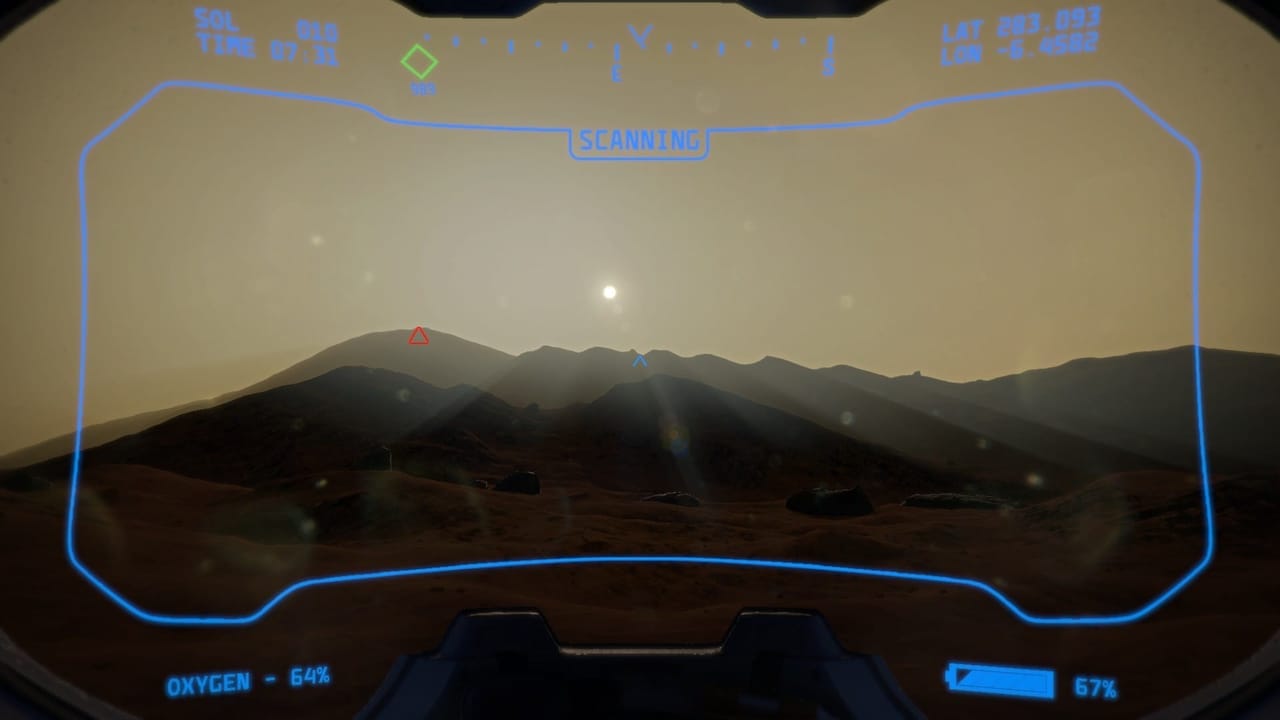
After you've left your pod, you must make your way to Habitat Alpha. A Scanner will show you marker beacons if you're in range and it's usually right in front of you, so you'll have a relatively short walk to make. Habitat Alpha is invariably in a state of disarray with all of its life support systems offline. You have to get them up and running again as quickly as you can.
The Habitat's life support systems consist of four distinct machines: Electrical, Heater, Water Reclaimer, and Reoxygenator. Electrical generates power for the habitat itself and charges the reserve battery for night-time operations. The Heater keeps the interior of the Hab warm. The Water Reclaimer generates water (necessary for drinking and for making oxygen), and The Reoxygenator produces breathable air. Each of these systems can be powered by solar panels hooked up to five mounts next to each unit and/or an RTG (Radioisotope Thermoelectric Generator), a little box filled with radioactive material that generates heat and power. If any of the independent power systems for one of these machines can't keep up 100% they will drain the Hab's reserve battery, and Electrical can only generate so much.
Aside from the solar panels, each system also has a number of components inside of them like wires, hoses, circuit boards, and fuses. Each unit requires a minimum number of these to be functional and has space for redundancies (as any proper Mars mission would). For example, Electrical only requires three wires but has space for five. Each component fits into a "slot", and these slots must be regularly maintained or else the component attached to it will be destroyed. You'll usually have enough components to be able to power up your first Hab, but making it to successive ones might require a bit more in the way of scavenging and jury rigging.
Once you have Habitat Alpha back online, you can head inside to drink water, eat food, recharge your EVA suit's battery, and refill your onboard oxygen tank. Your EVA (Extra-Vehicular Activity) suit is what keeps you alive outside of the habitat. It has an onboard oxygen tank, a battery which powers a heater (Mars is very cold), and a heads-up display. This is also where we encounter our first minor design issue - the EVA suit doesn't have any way to eat or drink water when you're suited up and exploring. That might sound ridiculous, but this is absolutely a real thing that NASA did. Astronauts have since stopped using the in-suit snack bars, but they still have water available to them when they're doing spacewalks. Lacuna Passage is set in the 2030s, and it's patently ridiculous that you don't at least have a water tank to drink from inside your EVA suit.
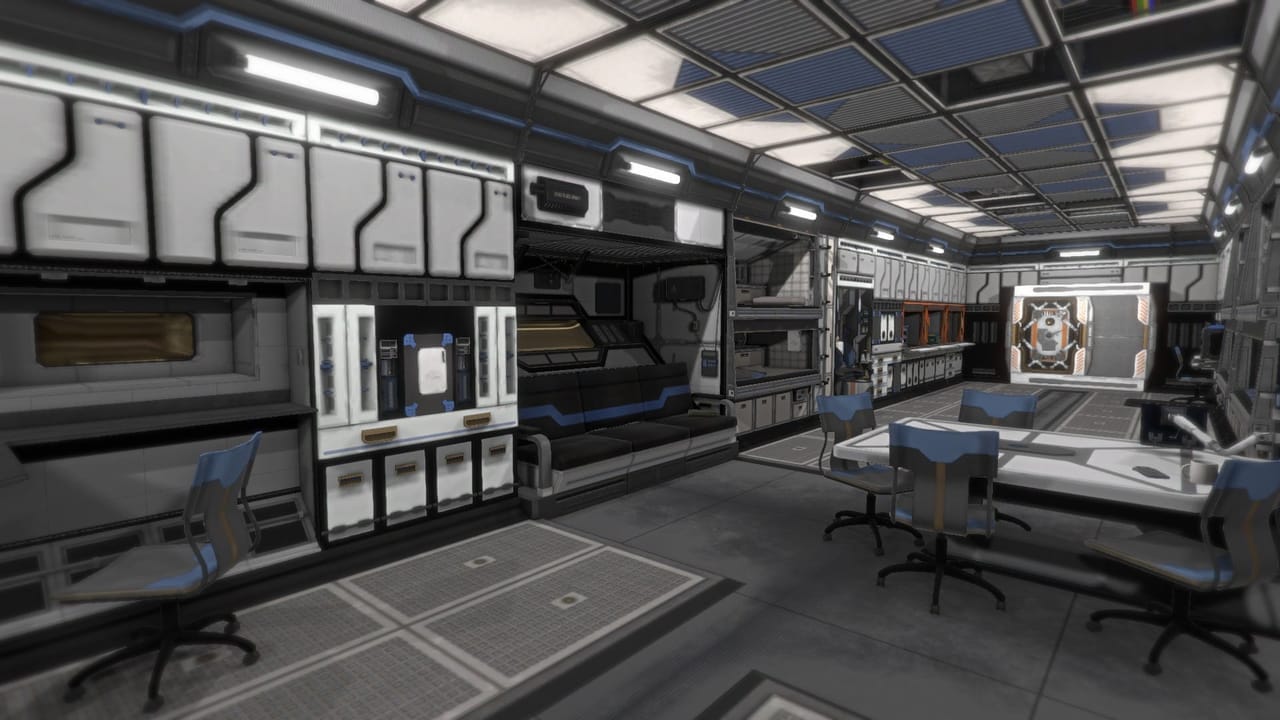
EVA complaints aside, your next step will be to find a WayStat. WayStats enhance your navigational ability, giving you access to your Latitude and Longitude. Without it, you have to rely on sight and your HUD's compass. (As an aside, a compass wouldn't work on Mars, but we've figured out a way to work around that using high-resolution imagery of the red planet.) WayStats are just like Hab machines in the sense that they too depend on components. A Circuit Board is needed to enhance your navigational ability, and at least one (out of three maximum) fuses is needed for weather monitoring ability. Dust storms mean the sun is blocked, and a blocked sun means solar panels won't work. In my full playthrough of the sandbox, I equipped each WayStat with two fuses apiece only to later find that dust storms hadn't been implemented yet. Welp.
Beyond that, your next goal is to find Habitat Beta and Habitat Gamma. Once you do, you'll have to go through a similar procedure to bring them back online. They were at least 2.5 km (1 1/2 miles) away from one another and you had no way of knowing where they were other than by looking around. After roughly six hours, I found the last hab, powered it up, and ended my session there as I had run out of objectives in the sandbox.
In short, Lacuna Passage's Sandbox involves a lot of scavenging components and walking to find more stuff that keeps you from dying while you follow your objectives. Strictly speaking, as a survival game I think Lacuna Passage would fall very short without some kind of end goal (which it doesn't yet have). However, with the addition of a narrative, I think the game would make for a compelling experience. The survival portion is only half of the appeal of the game, to my reckoning.
The sandbox was about as relaxing as one could expect a fight for survival to be. I almost never ran (consumes extra calories, reduces hydration, and consumes more oxygen). I kept my eyes open and planned everything carefully. Much like Mark Watney, I felt like Mars was out to kill me and was just waiting for me to make a mistake. Lacuna Passage accomplished that goal admirably.
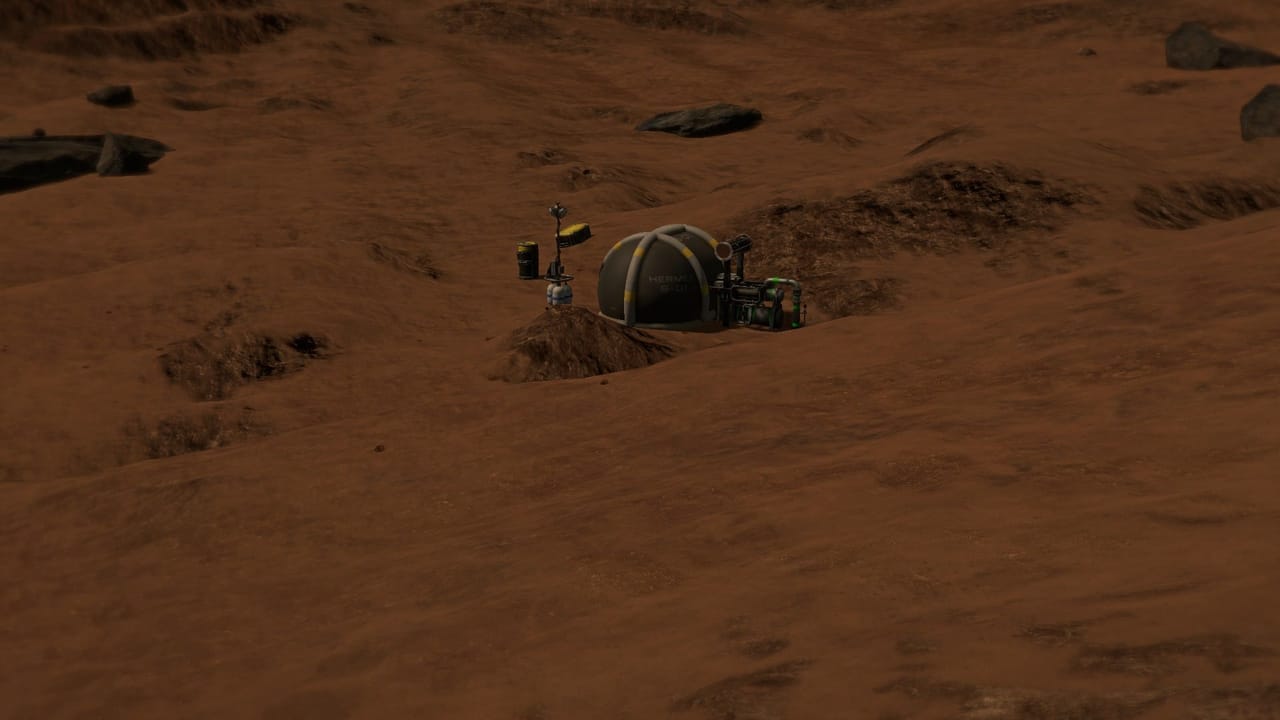
As much fun as I had, I encountered a few issues during my time with Lacuna Passage. The problems I did run into were relatively minor for a veteran of survival games like myself, but they need addressing nonetheless. Let's start with the bugs. Some equipment was associated with the wrong data, so trying to access a solar panel mount would instead bring up the RTG mount. I was completely unable to access any of the solar panels for my Water Reclaimer at Habitat Beta, and that meant that death was going to be happening sooner rather than later once the panels died due to lack of maintenance. (Fortunately, I found an RTG and plugged that in instead.) "Clicking on something and getting something else" was a problem I encountered with interactive objects quite a few times, but I think this is probably relatively easy to fix. I had a strange issue where there were two doors in the same doorway. Crafting also had a few problems, namely that resources weren't consistently consumed as they should have been. (As an example, filling an empty oxygen tank would give you a filled oxygen tank and let you keep the empty one, effectively giving you infinite oxygen tanks.)
Most egregiously, upon going to sleep and waking up, I had the three WayStats surrounding Habitat Alpha just disappear. They didn't fail due to lack of maintenance, their icons just outright disappeared off of the map and they went offline entirely. When I returned to one to bring it back online, it functioned normally and had suffered no damage but the icon was still broke. Subsequent naps resulted in a few icons moving around on the map, but it was the WayStats going offline for an unknown reason that could've resulted in my death due to a bug. As bad as this was, the game otherwise performed admirably.
As for the game's design, I took a number of issues with how some of the mechanics worked aside from the previously-mentioned lack of water & food inside of an EVA Suit. To start, the "Navigation" function only picks stuff up within certain ranges. You're going to spend most of your time walking around, scanning, and heading towards an icon that pops up. Different things have different ranges, too - a Hab can be detected around 900-950 meters out, a point of interest (like a downed satellite) will pop up when you're within a somewhat shorter distance, and a container will show up around 50-100 meters out. Scientifically speaking, I'm not sure what system this scanner uses but it doesn't seem very consistent. It's not based on visual sightings because you'll detect stuff through solid objects. I doubt it's based on infrared because a good dust storm would make it so the system wouldn't be able to see any IR strobe beacons. It's probably based on radio, but radio travels a good bit further than the distances here.
Speaking of distances, none of the icons had a label or distance. I had to continually refer to my map and try to guess how far away something was. Since this is (probably) a radio-based system, it should be possible to measure the distance with basic physics (and so it should be a function of the suit). The navigational beacons also must transmit some kind of data (as you see different icons depending on different things), and I can't imagine a unique label for each item would be all that more difficult to append to the data packet. My last issue with the navigational beacons was that your first pod doesn't get marked on the map but still shows up on the Scanner which makes searching for supplies near the starting area unnecessarily difficult. (Again, this one is an easy fix.)
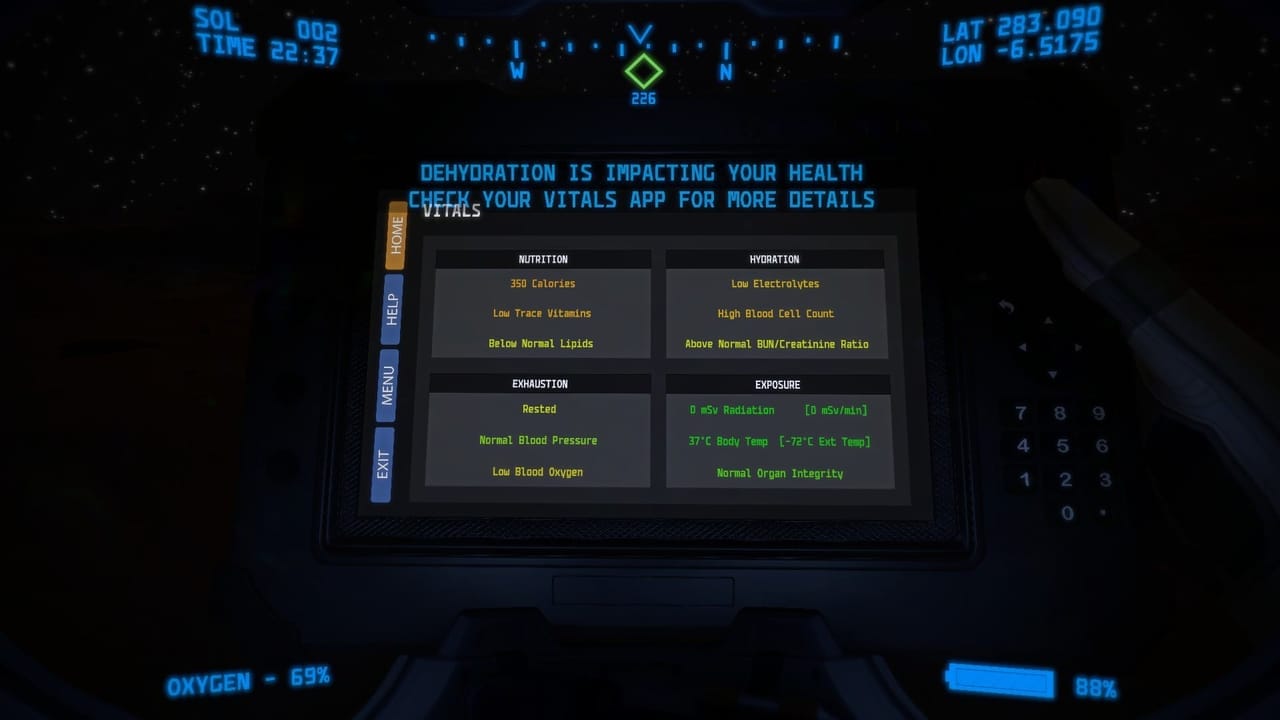
The mechanics of some of the designs seemed a bit too prone to failure. The Hab in The Martian has power come into a solar farm, charge a battery, and power individual life support units. Instead, for some reason, each life support unit has its own power (by way of 2-5 solar panels depending on size and/or an RTG). Sure, you should be able to hook up an emergency battery or solar panel (such an item exists in the game, and you can use it to charge your EVA suit while you're on the go), but I feel like a properly-designed space mission would have minimized these points of failure. I don't take issue with the scarcity of supplies - you're using the stuff leftover from a previous mission where everyone went missing - but I do take issue with the poor design of the equipment.
There were some other design issues as well - you burned through calories a little too fast, food seemed a bit scarce, and some necessary tools just aren't in the game yet. That's fine, though - this is a game in a pre-release state. These things will be tweaked and added in as time goes by. I'm willing to concede some of these issues with realism and convenience as necessary for making for more challenging gameplay, but right now it feels like a bit much.
Lacuna Passage's music captures the atmosphere perfectly. The sound design was spot on as well. Your travels in your EVA suit is accompanied by the gentle sound of a fan which circulates oxygen and heat throughout your suit, and sound feels appropriately muted outdoors.
Visually, the game is quite pretty. They've captured the vibe of Mars very well. I felt like I was in an endless desert where I could get lost at any time if any of my critical systems failed. Sunrise on virtual Mars is beautiful, and the star fields at night were spectacular. The interior of the Hab looked pretty crisp, too.
Ultimately, I think Lacuna Passage has a handful of bugs and a few design issues, all of which are very fixable. The core thing I think the game will need is an end - you're not going to be growing food in the small-ish habitat that you spend your downtime in. The story might result in your death, but Sandbox definitely needs some kind of "Get rescued" end. Supplies on Mars are finite, and just surviving will get boring awfully quick. Despite the handful of issues I have with the game, overall I think Lacuna Passage will shape up to be something I'll really enjoy playing. I'm excited to see what the story will be like.
Lacuna Passage was previewed on PC via Steam Early Access with a code provided by the developers.
What do you think of Lacuna Passage? Does it seem like it does a good job of capturing the Mars survival experience? What do you think the game's story will be about? Let us know in the comments below!
Previews you can trust: To ensure you're getting a fair, accurate, and informed review, our experienced team spends a significant amount of time on everything we preview. Read more about how we review games and products.
Have a tip, or want to point out something we missed? Leave a Comment or e-mail us at tips@techraptor.net
